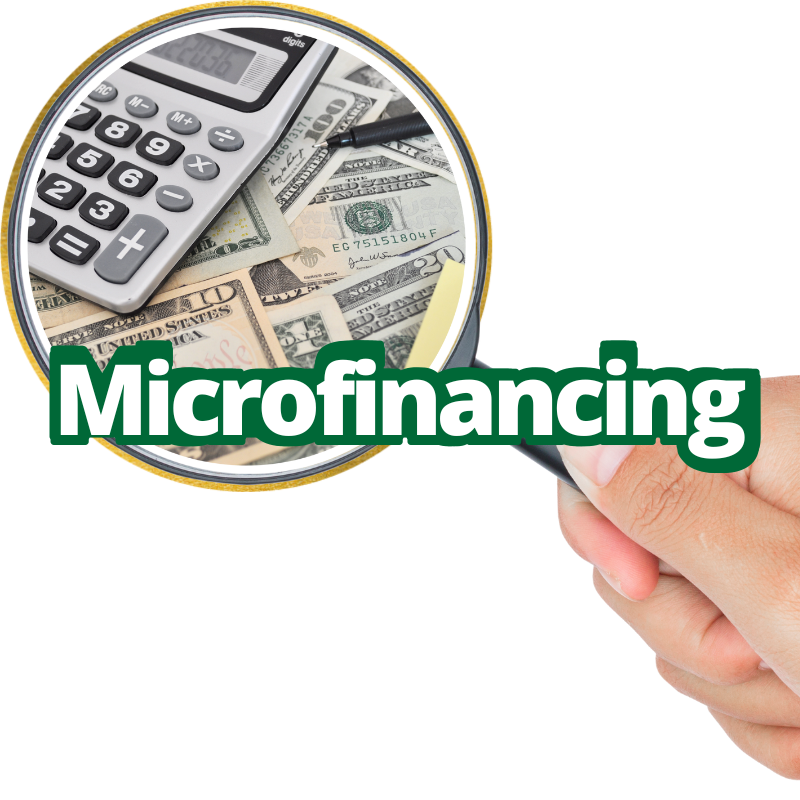Business
Microfinancing; Aid for early-stage business

ALWAYS CHECK YOUR BUSINESS
Small businesses drive the Philippine economy. They boost growth, innovation, and employment. Today’s economy makes small company operations difficult. Small businesses confront restrictive finance markets, high taxes and regulations, and more prominent competitors. Small businesses fail the worst. Starting a company has too many expenses and repercussions, from marketing, advertising, and PR (which may be challenging for some) to recruiting personnel who require training. This blog article will explore minor company issues in today’s environment and give solutions.
Mins to Read: 13 – 18 minutes
Age Bracket: 18-50

There will be no return on investment if neither time nor money is put in. As individuals, we are responsible for donating our time and energy to causes in which we have faith and our money to businesses and individuals in whom we have faith. As human beings, the most important considerations are time and money. Freedom is something that money can buy, and time seems to be something that we can never get back.
What is Microfinancing?
Microfinance refers to the services microfinance institutions (MFIs) provide their customers, including microloans, microsavings, and microinsurance. Microfinance was founded in the 1970s when social entrepreneurs started making small loans to the working poor. Professor Muhammad Yunus, the co-founder of Grameen Bank and a recipient of the Nobel Peace Prize in 2006, is one such figure who has become known internationally for his work in microfinance. Yunas and the Grameen Bank proved that the underprivileged could lift themselves out of poverty. Yunus also showed that the working poor had a relatively high payback rate for loans if the finance were handled appropriately. Both social engineers and profit-driven capitalists took notice of his efforts.
Microfinance was initially established to help those in need financially. In the past, only NGOs, microfinance-focused banks, and public sector banks made up the classic MFI landscape. There has been recent market development. Some non-profit MFIs, for instance, are transitioning into for-profit entities to increase their power, longevity, and client base. Now consumer financing giants like GE Finance and Citi Finance are also entering the microfinance sector. Consumer “supermarkets” like Wal-Mart, Elektra, and Tesco are making inroads as consumer lenders, with some even testing the waters of microfinance. Most microfinance institutions (MFIs) still prioritize helping those in need, although many startups are driven more by profit than by helping the poor.
Microfinance Products and Services
Current MFI offerings include the following goods and services:
- Microloans, or “microcredit,” are tiny loans, often for less than Php 5,000. Microbusiness owners in low-income regions are often the recipients of these loans. Basket weaving, tailoring, street selling, and backyard chicken coops are all examples of micro-enterprises. Microloans typically have an interest rate of about 35% worldwide. And although that number may seem hefty, it’s really quite a little cheaper than the other choices out there (such as informal local money lenders). Also, microfinance institutions (MFIs) need to recover the greater expenses of handling micro-loan transactions via higher interest rates.
- Microsavings: A microsavings account is a kind of savings account that does not impose any sort of minimum balance restriction on its account holders. Micro-savings accounts, like standard savings accounts in industrialized countries, allow the saver to access their money for important life events like weddings, funerals, and retirement.
- Micro-insurance: People in poor countries face more dangers and uncertainties in their daily lives. Health concerns, such as the spread of infectious illnesses, are also magnified, and direct exposure to natural catastrophes like mudslides is increased. Similar to its larger-scale cousin, micro-insurance aids in risk management by pooling risks. Micro-insurance, in contrast to conventional insurance, permits policies with very low rates and coverage limits. Crop insurance and insurance that pays off microloan debt in the case of the borrower’s death are both types of micro-insurance. Micro-insurance is most cost-effective for MFIs when premiums are collected in tandem with microloan repayments to mitigate the high administrative expenditure ratios associated with the industry.
The Impact of Microcredit in the Philippines
-
Policy Issue
To combat poverty and stimulate economic development, microcredit, or the practice of granting extremely tiny loans to the poor, typically with shared responsibility, is becoming more popular. However, in the “second generation” of microlending, when for-profit lenders issue individual liability loans in more urban and competitive contexts, the practice resembles more conventional retail or small business lending. Increasing access to credit is seen as an effective strategy for combating poverty and fostering economic progress, which is why the microcredit industry continues to flourish. Positive assertions regarding the impact of microcredit on borrowers and their companies are often made. However, there is little data to back up these statements.
-
The setting of the Review
Outside of Manila is where you’ll find First Macro Bank (FMB), a for-profit financial institution. In the same vein as many other Filipino microlenders, FMB is a second-generation lender that provides microentrepreneurs with modest, short-term, unsecured loans with predetermined payback terms. The bank charges an interest rate of 2.5% each month, which, when compounded with the other upfront costs, results in an effective annual interest rate of more than 60%, which is exorbitant even by the standards of industrialized countries.
All too typical of microlending customers, the borrowers in this study’s sample lack the kind of credit history or collateral that traditional lenders like commercial banks need. The majority of our customers are women (85%), and they have similar demographics to the local norms in terms of family size (5.1 people), monthly income (almost 25,000 Filipino pesos), and level of education (44% completed high school, and 45% had tertiary or college education). A sari-sari shop, or small grocery/convenience store, is the most popular kind of business operated by these customers (49 percent own one). Popular service industry jobs include hairstyling, barbering, tailoring, and repairing flat tires.
-
Specifics of the Meddling Event
The researchers, in collaboration with FMB utilized credit-scoring software to identify applicants with low credit scores based on business capacity, personal financial resources, external financial resources, personal and company stability, and demographic variables. The 1,601 participants in this research, the vast majority of whom were first-time loan seekers, represented the middle range of credit score applicants. There were 1,272 applications, 329 of whom were chosen randomly to be the treatment group and 1,272 to be the comparison group. This doesn’t mean the rejected borrowers can’t try to get a loan from another lender; it just means their chances of being approved are slim.
Loan amounts ranged from roughly 250,000 to 1 Million pesos for those approved, which is a significant sum compared to the borrowers’ earnings. For instance, the median loan size (10,000 pesos, or $220) was 37% of the typical borrower’s net monthly income. The loan term was 13 weeks, and payments were to be made each week. Interest was to be paid monthly at 2.5%. An APR of over 60% is reached when interest is added to various up-front charges.
One to two years after the application was completed, information was gathered on company performance, household resources, demographics, assets, member occupation, consumption, well-being, and political and community engagement.
-
Results and Policy Lessons
Impact on Borrowing: The chance of having a loan out in the month before the survey was higher in the treatment group, 9.4 percentage points higher than in the comparison group, after being randomly allocated to receive a loan.
Impact on Business Outcomes: Approved applicants utilized the available financing to downsize their operations. Clients who were treated and who were also business owners had fewer firms and fewer workers by the ratio of 0.1 to 0.27. The lower overhead costs enjoyed by these smaller establishments may account for their greater profitability. If loan profits are contingent on extensive business planning or tighter monitoring by the lender, customers may be more willing to invest in and expand their firms.
Impact on Risk Management There is mounting evidence that easier access to formal credit enhances rather than replaces informal, family- and community-based risk-sharing. Clients who received treatment were less likely to have formal insurance and more likely to rely on less formal risk-sharing mechanisms, such as family and friends for financial support in times of crisis. This shift in risk substitution was associated with a 7.9 percentage point decrease in the prevalence of various types of formal insurance, including life, home, fire, property, and automobile insurance. These findings point to the fact that microcredit enhances households’ risk-management capacities by providing them with new channels through which to do so, such as using credit in place of insurance or savings and promoting greater risk-sharing among family and community members.
The Top Microloan Options for Philippines-Based MSME
Landbank’s loan initiatives have aided thousands of business owners throughout the years.
Its widespread presence in the Philippines makes its services, such as General/Small & Medium Enterprises Loans, easily accessible to business owners in many regions:
Landbank General/Small & Medium Enterprises Loans
- Loan for a Specific Length of Time
- Suppliers of Working Capital and Other Means of Maintaining Financial Stability
- Term Loan Availability
- Line of Letter of Credit (LC)/Trust Receipt (TR) for Import/Domestic Transactions
- National Dedicated LC Standby Line
- A Line for Purchasing Domestic Receipts
- Support Structures for Exporting Production
- Line of Credit for Export Packaging
- Line Item Purchase of Export Bills
- Funding Opportunities for Rural Tourist Attractions
- Aid for Returning Overseas Workers
- Grants for New Technologies and Innovations
- Program to Assist in Financial Emergencies (I-Rescue)
- I-Rescue Bus Program Loaning Fleet
- Quicken the Process of the PUV Loan Program
- PFI-Accord
- Program to provide loans to reformed rebels
- A Financing Initiative for Franchises
- New FILIPINA Loan Scheme
Note: The highest sum that may be borrowed is variable and is set by the lender.
Steps to Applying:
- To ensure you meet the criteria for the loan you are looking for, please review the information provided here: Land Bank of the Philippines | General/Small & Medium Enterprises
- Get in touch with a nearby Landbank location.
SeedIn Philippines
SeedIn’s mission is to connect people interested in making short-term investments to companies in need of capital throughout Southeast Asia. Since its launch in the Philippines, SeedIn has produced over P58 million in investor returns while funding over P1 billion across 180 projects.There is a 7-day loan approval timeframe available via SeedIn. More loans are approved than at more conventional lenders because of the firm’s exclusive emphasis on the development of small and medium-sized businesses.
A maximum of $2,000,000 is available for loans with terms between 3 and 12 months.
Requirements:
- License from the DTI (Sole Proprietor)
- Authentic SEC Documents Based on Most Recent GIS (Corporations)
- Tax returns and audited financial statements for the most recent 1–3 years, all duly received and stamped by the BIR
- The Most Recent Management Report and/or Interim Financial Statements (balance sheet and income statement of the current year)
- Report on the Current Age of Accounts Receivable
- All corporate bank accounts must provide their most recent six months of statements (“must contain account name and number” for online bank statements or passbooks).
- Signature samples and official corporate identification from the President
- Compilation of Active Loans and Security Documents
- Information Regarding the SALN
- Strategy for Maintaining Operations During Unexpected Events (BCP)
- An Official Board Decision (loan amount should be indicated)
Steps to Applying:
- Get the smartphone app SeenIn and sign up. In addition, you may use this link to sign up on your desktop.
- Send in a funding request form.
- Submit Requirements
- In order to negotiate the funds and explain the following stages, a representative will contact you.
Pondo sa Pagbabago at Pagasenso (P3)
The effects of COVID-19 are still being felt, although most MSMEs have begun to recover. A lending scheme offered by the SBC and DTI is called “Pondo sa Bagbabago at Pagasenso.”
The initiative’s purpose is to provide small and medium-sized enterprises (SME) that borrow money from unregulated, high-interest lenders another option.
Maximum loanable amount:
- P5,000 to P200,000 (for those who have an asset amount not greater than P3 million) (for those with an asset size not more than P3 million).
- P500,000 (for those with an asset size not more significant than P15 million) (for those with an asset size not more than P15 million).
Eligibility:
Self-employed people or those who have been running small businesses for at least a year. Examples of necessary requirements are:
- Government ID
- Barangay clearance
- Proof of business activity (1 year)
- Certificates from the local government
- Proof of 1-year residence
And yet, there are still more prerequisites:
- Barangay and Municipal Business Permit
- DTI Business name registration (for loans exceeding P50,000)
- Photocopy of government-issued ID
- ID picture
Steps to Applying:
- Register for an account online, or visit any of the financial institutions that are DTI and SB Corp, partners.
- Put in your paperwork.
- Please wait to be contacted by the appropriate professionals regarding your application. Please include any materials we may want.
MSME Credit Guarantee Program (MCGP)
The purpose of the MCGP is to provide much-needed operating capital to micro, small, and medium-sized enterprises (MSMEs) and to boost credit availability from the banking sector.
Small and medium-sized enterprises (SMEs) impacted by COVID-19 are qualified borrowers. At the same time, banks with a CAMELS rating of at least three and non-bank banking firms regulated by the Bangko Sentral ng Pilipinas are qualified lenders.
Maximum loanable amount:
- P50 million
- We may approve loans in excess of P50 million case-by-case basis. PHILGUARANTEE’s standard credit guarantee program rules will apply.
How to apply:
- Pay a visit to any of the PHILGUARANTEE-approved banking institutions.
- Include the necessary information and the application form.
- Keep patient as you await the outcome of your loan application.
HomeCredit Cash Loan
HomeCredit allows you to apply for a loan online, saving time and effort. If you’re looking to launch a company or grow an existing one, consider applying for a HomeCredit Cash Loan These loan payments are pretty reasonable. There are no extra fees, and the approval process takes no more than a minute.
Maximum loanable amount: P150,000
How to apply:
- Get the My Home Credit App now.
- In the Cash Loan banner, click “Apply now.”
- Select the loan’s amount and period.
- Verify your cellphone number and provide other details.
- Send in your application and prepare your two IDs.
- On the app’s main screen, you may keep tabs on the progress of your loan.
- Sign the contract after it has been accepted.
- You may pick up your money or claim it through a bank transfer. If the contract is not declared within seven days, it will be annulled.
The Philippine SME sector has shown remarkable endurance in the face of COVID-19 and its disastrous economic effects. These firms are crucial in creating job opportunities and industrializing rural regions (representing 63% of the Philippine labor population). Due to their expansion, local micro, small, and medium-sized enterprises (MSMEs) have inspired a new generation of aspiring entrepreneurs who want to make their mark. However, launching a company demands capital. This might provide difficulty for aspiring entrepreneurs who lack access to money.
Regarding the nation’s financial systems, there is little doubt that banks reign supreme. In contrast, our poll revealed that 79.8% of respondents had not borrowed money from banks or financial organizations over the last year. Acquiring a microloan from a bank to launch your company is surprisingly simple. This is suggested over resorting to loan sharks that demand excessive interest rates. This article will discuss the finest microloan solutions for budding MSME entrepreneurs like yourself.
FAQs
What are the different types of Microfinance?
There are Three(3) microfinance that we have here, especially in the Philippines–
- Microloans
- Microsavings
- Micro-insurance
Is there any impact of Microcredit here in the Philippines?
There is a definite answer to it, there are many impacts of Microcredit in the Philippines which are:
- Policy Issues
- The Setting of the Review
- Specifics of the Meddling Events
- Results and Policy Lessons
MUST-READ AND SHARE!
2023 Your Practical Wedding Guide
Your Ultimate Access to Kuwait Directories in this COVID-19 Crisis
Investments and Finance Ultimate Guide
OFW FINANCE – Money News Update that you need to read (Table of Contents)
A Devotional for having a Grateful Heart
Stock Investment A Beginner’s Guide
How To Save Money Amidst Inflation
Philippines Best Banks with High-Yield Savings Return
Essentials Before Applying For a Credit Card
Credit Card Starter Guide for Beginners
If you like this article please share and love my page DIARYNIGRACIA PAGE Questions, suggestions send me at diarynigracia @ gmail (dot) com
You may also follow my Instagram account featuring microliterature #microlit. For more of my artworks, visit DIARYNIGRACIA INSTAGRAM



Peace and love to you.